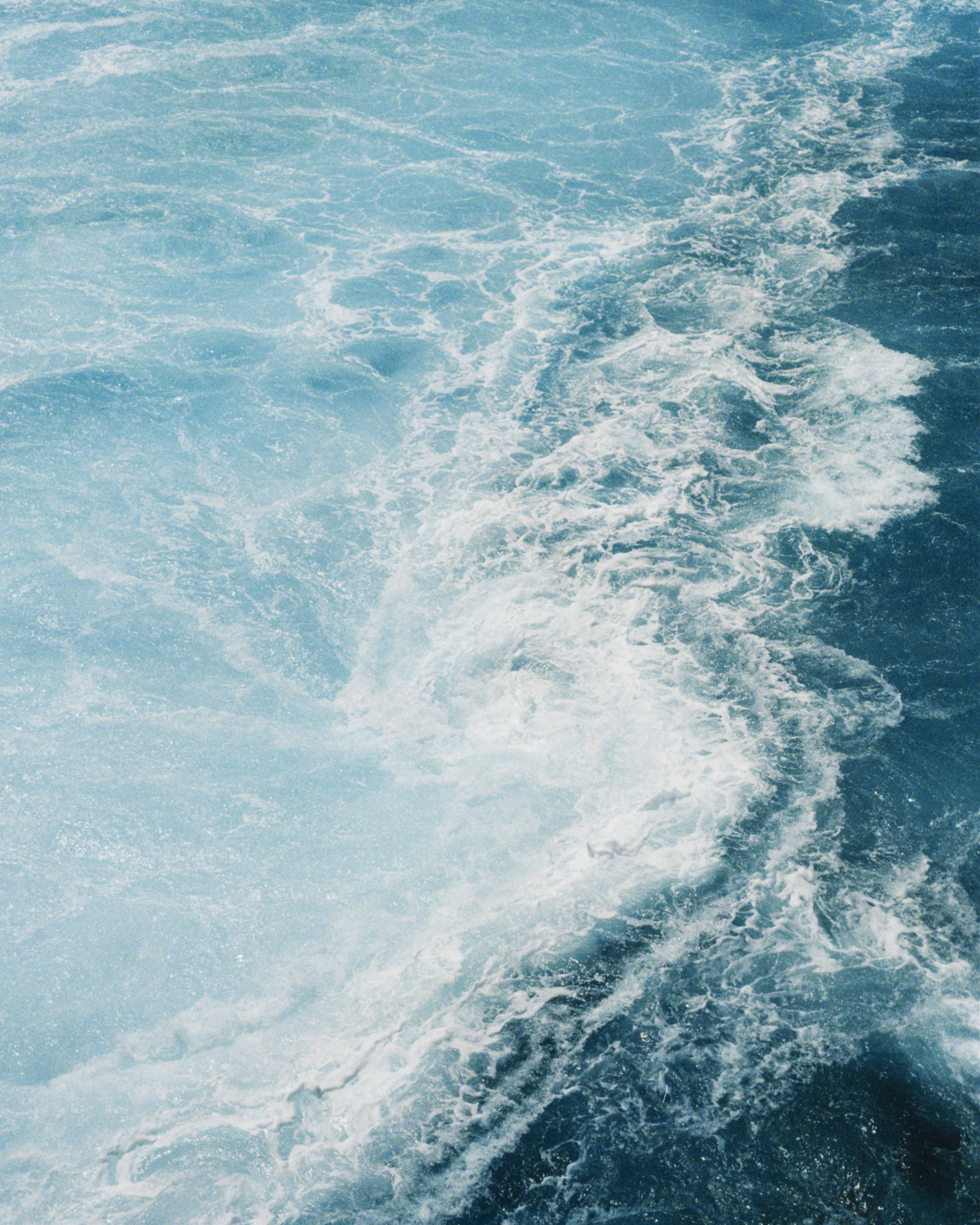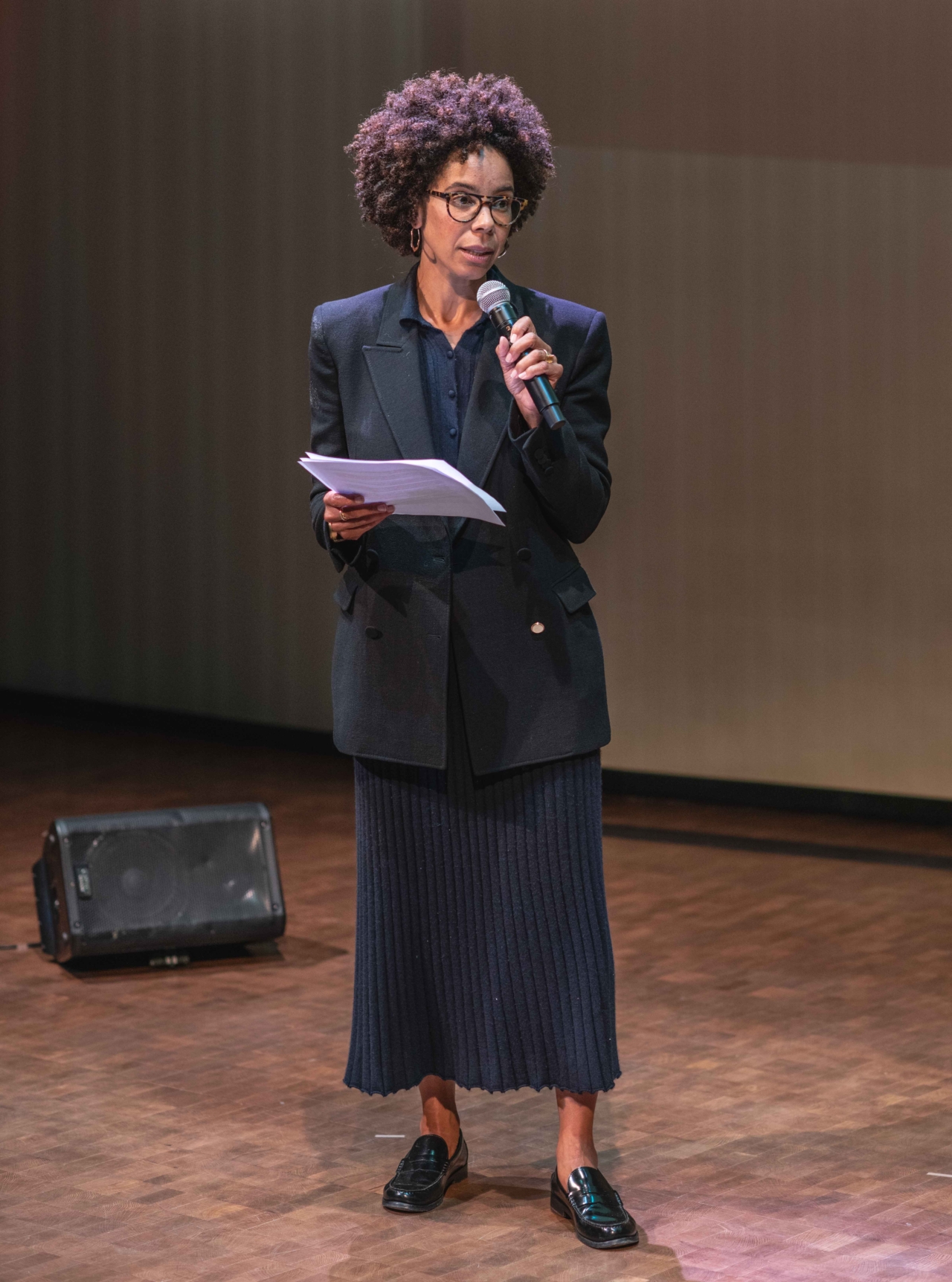

Photograph by Rita Puig-Serra and Dani Pujalte / Connected Archives
words by ayana elizabeth johnson
It should go without saying, but I’ll say it anyway: The ocean is a very big deal.
That is a fact. But let’s get into the feelings of it: Are you in love with the ocean? If not, have a think about why that is, and maybe go google octopuses or nudibranchs.
If you are enamored, do you remember the moment that you fell head over heels for the ocean? Maybe close your eyes and think back: where you were, how the air felt, how the water felt, the colors, the emotions, the smells. Take a breath. Conjure that inspiring place. Hold that image for a moment.
Let yourself remember why ocean protection and restoration matter—not as an abstract issue, but as something deeply personal. My story of how I fell in love with the ocean is the first chapter of my book, What If We Get It Right?, so here I will just say that I wrote that book to remind us that the future is not yet written. That we have choices. That we can choose a path of abundance, of justice, and of regeneration. And to make that future real, we need not only science and policy, but also culture and imagination.
That said, as a marine biologist, I’ll offer up a few facts to ground our reverence for the ocean, facts focused on solutions.

“We can choose a path of abundance, of justice, and of regeneration. And to make that future real, we need not only science and policy, but also culture and imagination.”
It’s worth repeating: The ocean is a very big deal. Its currents drive our climate system, and it’s a major component of our climate solutions. Despite that, the ocean has been largely left out of climate conversations. But we are now getting some global traction.
If the United States has been breaking your heart and you haven’t been paying attention to what’s happening internationally, I’ll catch you up on a few major developments. This month, after decades of negotiation, the “high seas treaty” was ratified, which was the first global framework to protect biodiversity in international waters. Also this month, also after decades of negotiation, the World Trade Organization signed the Fisheries Subsidies Agreement, ending harmful fisheries subsidies that drive overfishing.
At the same time, after years of negotiation on a Global Plastics Treaty—an agreement to address plastic pollution at the source—the process concluded without reaching an agreement. Gutting. But it’s a long game. We don’t get to give up.
While international treaties matter, they are actually a small part of the story, because climate solutions get implemented at the local level. As a marine biologist and Brooklyn native, that’s what inspired me to co-found Urban Ocean Lab, a think tank for the future of coastal cities. One in 7 Americans lives in coastal cities—more than 47 million people—facing the dual threat of sea level rise and intensifying storms. And now more than ever, with the federal government abdicating its responsibilities, city governments are pivotal in advancing climate solutions. Our safety, cultures, and economies depend on figuring out how to live better with our coastal waters.
How do we build momentum for all the changes that are needed? Well, policy follows culture, and culture is shaped by stories—by how we imagine ourselves in relationship to one another, and to this salty planet we share. We urgently need a cultural shift toward appreciating the role of the ocean in climate solutions, and for reconnecting us with the wonders of the ocean that inspire us to do the hard work to protect and restore it.
“Renaissance, etymologically, means rebirth. So what do we want to give birth to? What will you create? How will you embrace possibility?”
How we protect and restore the ocean is key—who we include and who leads. Billions of people rely on the ocean for food and livelihoods. Island nations and coastal communities are on the frontlines of both rising seas and rising opportunity. Indigenous knowledge and leadership are essential. So when we talk about protecting the ocean, we are really talking about protecting people: our communities, our cultures, our futures. Ocean conservation is also a matter of cultural preservation.
A Blue Renaissance is about weaving all of this together. Because I love a “what if” question, I’ll put it this way: What if climate adaptation is beautiful? What if we revere biodiversity and the magic of photosynthesis? What if we value culture as a form of resilience? What if we act as if we love the future?
Renaissance, etymologically, means rebirth. So what do we want to give birth to? What will you create? How will you embrace possibility?
This may sound squishy in this era obsessed with technology and dollars, but research shows that love—for future generations, for nature—is by far the strongest motivator for people to get involved in climate action. It’s 12 times more popular than creating jobs or economic growth.
So, while I kind of can’t believe I’m saying this, I invite you to lean into love. And I invite you to invite others into this work. Eleven percent of Americans, about 37 million people, are willing to become actively engaged but have not yet taken any action. We need to welcome more and more people in because we need a much bigger and stronger team to overcome the ridiculous hurdles that are being thrown in our path.
It’s critical to understand that we have the solutions we need. The renaissance has already begun; it’s a matter of how quickly and how justly and how delightfully we can implement the many solutions we have at our fingertips.
Because I have many more questions than answers, I also invite you to consider: What role can you play in making ocean-climate solutions happen? What if we get it right?
Dr. Ayana Elizabeth Johnson on Why the Ocean Is a Very Big Deal
